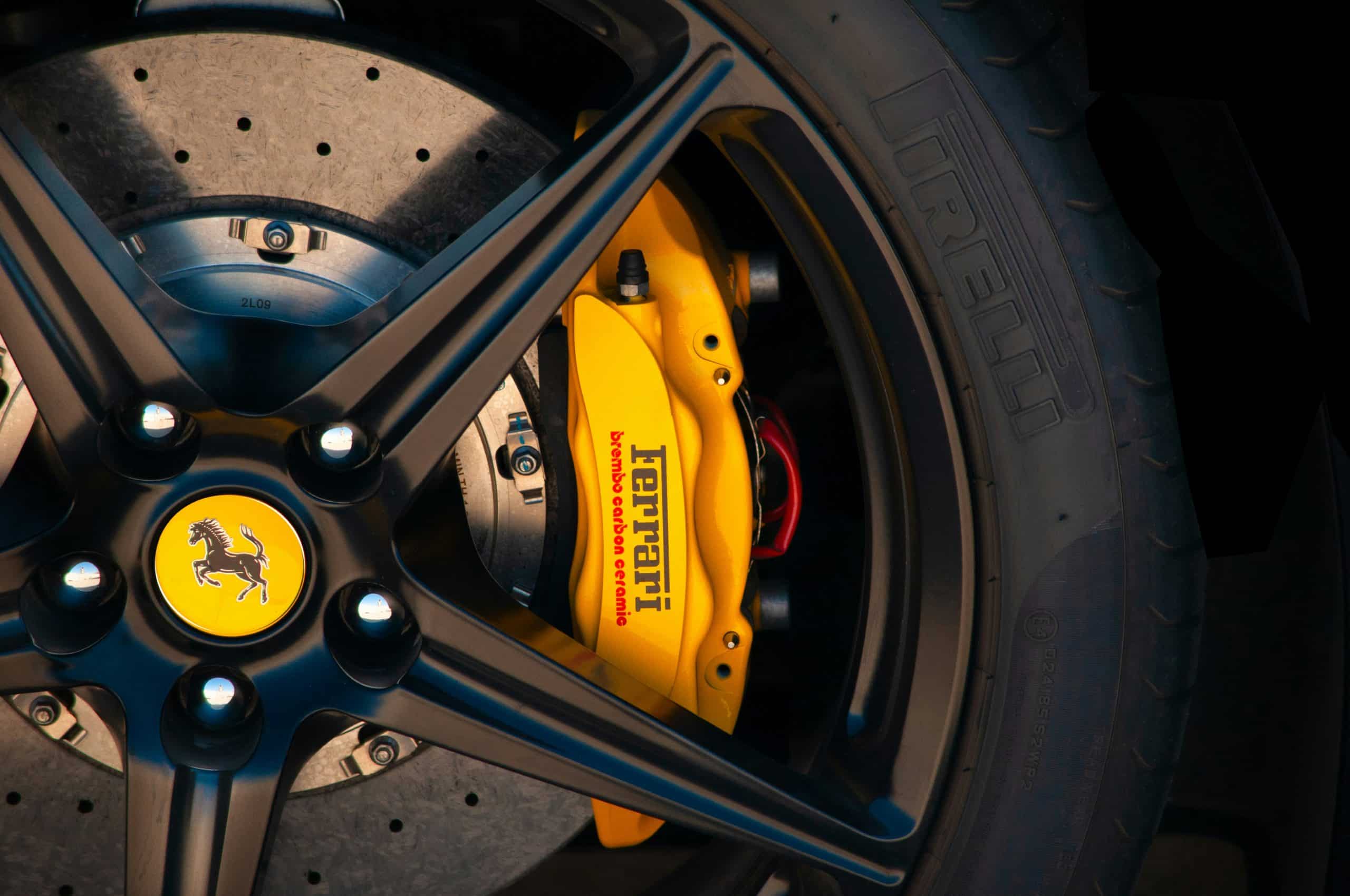Brakes are a critical component of any vehicle. They are essential to the safety of the driver, passengers, and other road users. One of the main challenges with brakes, especially in high-performance vehicles, is overheating. Overheated brakes can lead to brake fade, reducing the effectiveness of the braking system and increasing the risk of accidents. But can ventilated brake discs offer a solution to this problem? This article delves into the world of brake technology, exploring whether ventilated brake discs can significantly reduce overheating in high-performance driving.
What Are Ventilated Brake Discs?
Before we dive into the heart of the matter, let’s take a moment to understand what ventilated brake discs are. Ventilated brake discs, also known as vented rotors, are a type of brake disc designed to dissipate heat more effectively than standard brake discs.
Sujet a lire : Can a High-Flow Air Box Improve Engine Breathing and Performance in Naturally Aspirated Cars?
These brake discs are made up of two thin disc plates joined together by an ‘anchor’ or ‘pillar’ structure. This design creates a gap or ‘vent’ between the two plates that allows air to flow through, cooling the brake disc.
Ventilated brake discs are typically used in high-performance cars and heavy vehicles that generate a lot of heat during braking. The main question is, can they significantly reduce overheating, particularly in high-performance driving scenarios?
En parallèle : What Are the Advantages of Upgrading to LED Tail Lights for Visibility and Style?
Overheating in High-Performance Driving
High-performance driving, which is characterized by high speeds and frequent, hard braking, generates a lot of heat. This heat is produced by the friction between the brake pads and the brake disc when the brakes are applied. If not effectively managed, this heat can lead to overheating, which can cause a myriad of problems, including brake fade, warped rotors, and even total brake failure.
Brake fade is the decrease in stopping power that can occur after repeated or sustained use of the brakes, especially in high-temperature conditions. This is often the most immediate and noticeable effect of brake overheating.
Warped rotors, on the other hand, are a longer-term result of overheating. The extreme heat can cause the brake discs to warp, leading to a pulsating effect when the brakes are applied. This can reduce the effectiveness of the brakes and lead to an uncomfortable driving experience.
In extreme cases, overheating can lead to total brake failure. This is when the brakes lose their ability to slow down or stop the vehicle, which can be extremely dangerous, especially at high speeds.
The Role of Ventilated Brake Discs in Reducing Overheating
Ventilated brake discs were designed to help manage the heat generated during braking. The vents in these discs allow cool air to flow through the disc, helping to disperse the heat generated by the friction between the brake pads and the disc.
The design of the vented disc itself also contributes to its cooling ability. The ‘anchor’ or ‘pillar’ structure that joins the two disc plates creates a large surface area for heat dissipation, which aids in cooling the disc.
In high-performance driving scenarios, where braking is frequent and intense, ventilated brake discs can be especially beneficial. The constant airflow through the discs helps to keep the temperature down, reducing the risk of overheating and its associated problems such as brake fade and warped rotors.
Effectiveness of Ventilated Brake Discs in High-Performance Driving
While it’s clear that ventilated brake discs are designed to manage heat more effectively than standard brake discs, the question remains: Can they significantly reduce overheating in high-performance driving?
Numerous studies and real-world experiences suggest that they can. For instance, a study published in the International Journal of Automotive Engineering found that ventilated brake discs could reduce the temperature of the brake system by up to 20% compared to solid brake discs. This is a significant reduction that can help to prevent overheating and its associated problems.
Furthermore, many high-performance car manufacturers, including Porsche, Ferrari, and Lamborghini, equip their cars with ventilated brake discs. This is a clear indication of the faith that these manufacturers have in the ability of ventilated brake discs to manage heat effectively.
However, it’s important to note that while ventilated brake discs can significantly reduce overheating, they are not a magic solution to all braking problems. Proper brake maintenance and driving techniques are also crucial in preventing brake overheating and ensuring the overall safety and performance of the vehicle.
The Future of Brake Technology
As technology advances, we are seeing more and more innovative solutions to the problem of brake overheating. For instance, some manufacturers are now experimenting with carbon-ceramic brake discs, which are even more effective at dissipating heat than traditional ventilated brake discs.
Furthermore, the rise of electric vehicles, which use regenerative braking systems, may offer a completely new solution to the problem of brake overheating.
While the future of brake technology is exciting, for now, ventilated brake discs remain one of the most effective solutions for reducing overheating in high-performance driving.
The Relationship between Ventilated Brake Discs and Brake Maintenance
While ventilated brake discs play a significant role in cooling the braking system, they are not the only factor to consider in reducing overheating. Brake maintenance is an essential aspect of ensuring optimal performance and longevity of your braking system.
Regular checks on the brake fluid, for instance, are necessary to maintain its boiling point and viscosity. Over time, brake fluid tends to absorb moisture, leading to a decrease in its boiling point. When the boiling point is low, the fluid can vaporise under extreme heat, causing a loss of hydraulic pressure in the braking system, something known as brake fade. Replacing the brake fluid regularly can prevent this occurrence.
Moreover, brake pads, just like other parts of the vehicle, undergo wear and tear. As they wear down, they become less effective, generating more heat due to increased friction. Regular inspection and timely replacement of worn-out brake pads are crucial.
Lastly, drivers should also consider their driving techniques. High-performance driving often involves hard and frequent braking, which generates massive amounts of heat. By adjusting their driving style to brake more progressively, drivers can reduce the amount of heat generated, hence minimising the risk of overheating.
Therefore, while ventilated brake discs are instrumental in managing brake heat, their efficiency can be vastly improved with proper brake maintenance and sensible driving techniques.
Conclusion: Ventilated Brake Discs and High-Performance Driving
In conclusion, ventilated brake discs indeed play a crucial role in significantly reducing overheating in high-performance driving. Their design, which allows for air ventilation, effectively dissipates heat generated from the friction between the brake pads and the disc.
However, as we have discussed, it is not a standalone solution to brake overheating. To ensure optimal braking performance and safety, drivers must couple the use of ventilated brake discs with proper brake maintenance and good driving techniques. Regular checks on brake fluid, timely replacement of worn-out brake pads, and adopting progressive braking can all contribute to better heat management in the braking system.
Moreover, the future of brake technology is promising, with advancements such as carbon-ceramic brake discs and regenerative braking systems offering even better solutions to the challenge of brake overheating. But for now, ventilated brake discs remain a reliable and effective choice for reducing overheating in high-performance driving.











